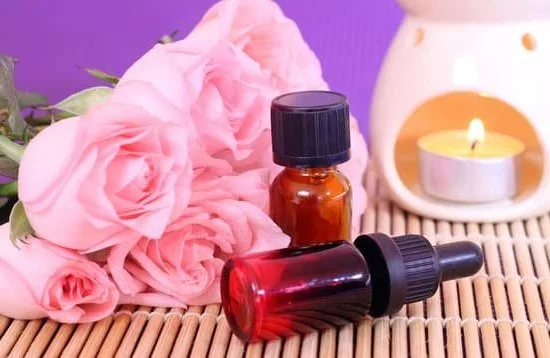Nausea and vomiting are common symptoms experienced by individuals undergoing various medical treatments, as well as those with underlying health conditions. In the search for effective antiemetic therapies, the debate between aromatherapy and oral ondansetron has gained increasing attention. Aromatherapy, often hailed for its natural approach, and oral ondansetron, a pharmaceutical drug, both offer potential solutions in managing these distressing symptoms.
The concept of antiemetic therapy revolves around alleviating nausea and vomiting, which can be caused by numerous factors such as chemotherapy, surgery, pregnancy, or gastrointestinal disorders. Effective management of these symptoms is crucial not only for improving patients’ quality of life but also for ensuring their overall well-being during treatment or recovery.
Aromatherapy has been used for centuries as a holistic approach to managing various health issues, including nausea and vomiting. Its use involves the inhalation or topical application of essential oils derived from plants to stimulate therapeutic effects on the body and mind. Conversely, oral ondansetron is a widely prescribed medication that belongs to the class of serotonin 5-HT3 receptor antagonists.
It works by blocking the action of serotonin in the brain, thus reducing feelings of nausea and preventing vomiting. The comparative effectiveness of these two approaches in addressing antiemetic needs has prompted numerous studies and clinical trials aimed at identifying their respective benefits and drawbacks.
Understanding Aromatherapy
Aromatherapy has been used for centuries as a natural healing remedy, with its origins dating back to ancient civilizations such as the Egyptians, Greeks, and Romans. The practice involves using essential oils extracted from plants to promote physical and emotional well-being.
These essential oils can be inhaled, applied to the skin, or even ingested in some cases. Aromatherapy is believed to work by stimulating smell receptors in the nose, which then send messages through the nervous system to the limbic system – the part of the brain that controls emotions.
Studies have shown that certain essential oils used in aromatherapy may have antiemetic effects, meaning they can help reduce nausea and vomiting. For example, peppermint oil has been found to alleviate chemotherapy-induced nausea in cancer patients.
Another study found that inhaling ginger essential oil reduced nausea and vomiting in pregnant women. The mechanisms behind these effects are not yet fully understood but may involve the interaction between the aroma molecules and receptors in the brain related to nausea and vomiting.
In addition to its potential antiemetic benefits, aromatherapy is also thought to have calming and relaxing effects on the mind and body. This can be particularly helpful for individuals experiencing nausea and vomiting due to anxiety or stress. As a result, aromatherapy has gained popularity as a complementary therapy for managing symptoms related to various conditions, including cancer treatment, pregnancy, motion sickness, and gastrointestinal disorders.
Oral Ondansetron
Oral ondansetron is a medication that is commonly used in antiemetic therapy to prevent and treat nausea and vomiting. It belongs to a class of drugs known as serotonin 5-HT3 receptor antagonists, which work by blocking the action of serotonin, a chemical in the body that can trigger nausea and vomiting. Oral ondansetron is available in different forms, including tablets, soluble films, and oral disintegrating tablets, making it a convenient option for patients who may have difficulty swallowing pills.
Clinical studies have shown that oral ondansetron is effective in reducing nausea and vomiting associated with chemotherapy, radiation therapy, and surgery. It has also been found to be beneficial in preventing postoperative nausea and vomiting (PONV), which can occur after surgical procedures. The drug works by blocking the serotonin receptors in the gastrointestinal tract and the brain, thereby reducing the signals that lead to the sensation of nausea.
One study comparing aromatherapy versus oral ondansetron for antiemetic therapy found that while both treatments were effective in reducing the severity of nausea and frequency of vomiting episodes, oral ondansetron showed a greater reduction in symptoms overall. However, it is important to note that aromatherapy may still be a viable option for some patients who prefer non-pharmacological interventions or who may experience adverse effects from oral ondansetron.
Additionally, accessibility and cost considerations may also play a role in determining which treatment option is best for individual patients seeking antiemetic therapy.
| Oral Ondansetron | Aromatherapy |
|---|---|
| Effective in reducing nausea and vomiting | Potentially beneficial for some patients |
| Available in various forms for convenience | Non-pharmacological intervention |
| Clinically proven efficacy | Efficacy varies among individuals |
Efficacy
Research Studies on Aromatherapy and Oral Ondansetron
Several research studies have been conducted to compare the effectiveness of aromatherapy and oral ondansetron for antiemetic therapy. One study published in the Journal of Alternative and Complementary Medicine found that inhaling essential oils, such as ginger and peppermint, significantly reduced nausea and vomiting in cancer patients undergoing chemotherapy. In another study, researchers compared the use of oral ondansetron with the inhalation of ginger essential oil in postoperative patients and found that both interventions were equally effective in reducing nausea.
Effectiveness of Aromatherapy
Aromatherapy has shown promising results in reducing nausea and vomiting in various clinical settings. The use of essential oils such as lavender, ginger, and peppermint has been associated with a decrease in chemotherapy-induced nausea as well as postoperative vomiting. Additionally, aroma inhalation therapy has been found to be effective in managing pregnancy-related nausea.
Effectiveness of Oral Ondansetron
Oral ondansetron is a commonly prescribed antiemetic medication that works by blocking serotonin receptors in the gastrointestinal tract and central nervous system. Clinical studies have shown that oral ondansetron is highly effective in controlling chemotherapy-induced nausea and vomiting, as well as nausea and vomiting associated with surgery and anesthesia. It is often used as a first-line treatment for these conditions due to its fast-acting nature and proven efficacy.
Overall, both aromatherapy and oral ondansetron have demonstrated effectiveness in reducing nausea and vomiting in clinical studies. However, further research is needed to determine the most appropriate use cases for each treatment modality and to better understand their mechanisms of action.
Safety and Side Effects
When considering antiemetic therapy, it is crucial to evaluate the safety profile and potential side effects of the available treatments. Aromatherapy, which involves the use of essential oils to promote health and well-being, is generally considered safe when used properly. Common essential oils used in aromatherapy for antiemetic therapy include ginger, peppermint, and lavender. These oils are known for their calming and digestive properties, making them potential options for alleviating nausea and vomiting.
On the other hand, oral ondansetron is a medication commonly prescribed for the prevention and treatment of nausea and vomiting caused by chemotherapy, radiation therapy, and surgery. While effective in managing these symptoms, oral ondansetron may come with potential side effects such as headache, constipation, and fatigue. It is important for patients to discuss any pre-existing medical conditions or medications they are currently taking with their healthcare provider before starting oral ondansetron.
It is important to note that while aromatherapy carries a generally favorable safety profile, some individuals may have allergic reactions or sensitivities to certain essential oils. Additionally, using undiluted essential oils directly on the skin can cause irritation or adverse reactions.
Patients should always perform a patch test or consult with a qualified aromatherapist before using essential oils for antiemetic therapy. With oral ondansetron, healthcare providers must carefully assess each patient’s medical history to determine its suitability and minimize the risk of potential side effects.
Accessibility and Cost
The accessibility and cost of antiemetic therapies are essential factors to consider for patients seeking relief from nausea and vomiting. Aromatherapy, which involves the use of essential oils to promote well-being, is often perceived as a more accessible and cost-effective option compared to oral ondansetron, a prescription medication commonly used for antiemetic therapy.
In terms of accessibility, aromatherapy can be easily incorporated into daily routines at home or in healthcare settings. Essential oils used in aromatherapy can be purchased over-the-counter or online, making them readily available to patients without the need for a prescription. On the other hand, oral ondansetron is a prescription medication that requires a healthcare provider’s authorization and must be obtained from a pharmacy, which may limit its accessibility for some patients.
In addition to accessibility, cost is another important consideration when comparing aromatherapy with oral ondansetron for antiemetic therapy. Aromatherapy products such as essential oils and diffusers vary in price but are generally more affordable than prescription medications like oral ondansetron.
Patients may also have the option to use aromatherapy techniques without additional expenses, such as inhaling essential oils directly from the bottle or adding a few drops to a warm bath. Conversely, the cost of oral ondansetron can vary depending on insurance coverage and generic availability, potentially posing financial barriers for some patients seeking effective antiemetic treatment.
Overall, the accessibility and cost of aromatherapy versus oral ondansetron for antiemetic therapy play significant roles in patient decision-making and healthcare management. While both options have their advantages and limitations, understanding these factors can empower patients to make informed choices about their antiemetic treatment plans based on their individual needs and preferences.
| Factor | Aromatherapy | Oral Ondansetron |
|---|---|---|
| Accessibility | Easily accessible over-the-counter or online | Requires prescription and access through pharmacy |
| Cost | More affordable; various pricing options | Varying costs based on insurance coverage and generic availability |
Conclusion
In conclusion, the debate between aromatherapy versus oral ondansetron for antiemetic therapy is an ongoing one, with both treatments showing promise in reducing nausea and vomiting. Aromatherapy has a long history and is supported by some scientific evidence suggesting its effectiveness in managing these symptoms. On the other hand, oral ondansetron has been widely used as a pharmaceutical antiemetic and has demonstrated strong efficacy in clinical studies.
When it comes to safety and side effects, aromatherapy is generally considered safe when used properly, although it may cause mild skin irritation in some individuals. Oral ondansetron also has a good safety profile, with potential side effects such as headache, fatigue, and constipation. Accessibility and cost are important factors to consider as well. Aromatherapy can be easily accessible but may not be covered by insurance, while oral ondansetron may require a prescription but could be eligible for insurance coverage.
Therefore, patients and healthcare providers should carefully weigh the efficacy, safety, accessibility, and cost of both aromatherapy and oral ondansetron when considering antiemetic therapy. It is advisable for individuals to consult with their healthcare provider to determine the best course of treatment for their specific needs. More research is needed to provide clearer guidance on which option would be more beneficial for different patient populations.

Are you looking for a natural way to improve your health and wellbeing?
If so, aromatherapy may be the answer for you.





